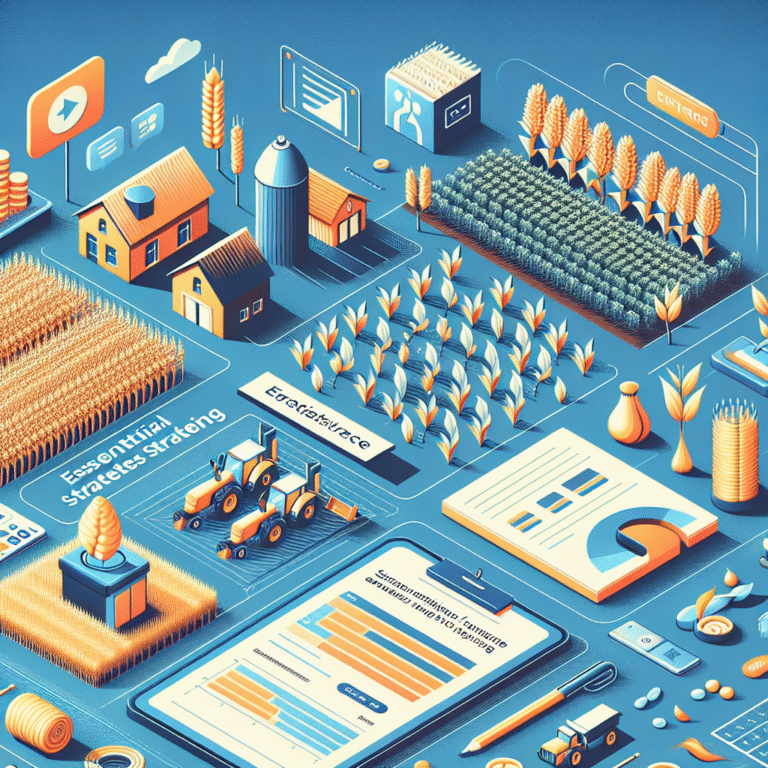Blockchain scalability solutions face their biggest problem: Bitcoin handles just 4-7 transactions per second (TPS) while Visa processes thousands. This limitation becomes obvious especially when you have Bitcoin taking about 10 minutes to mine a block and add it to the chain. These performance limits create major bottlenecks that stop decentralized applications (dApps) from reaching mainstream users.

Understanding the Role of Layer 2 in dApp Performance
Layer 2 solutions lead the vanguard of blockchain scalability solutions and tackle the basic limits that affect decentralized applications. The critical role these solutions play becomes clear when we look at the challenges they solve.
The Scalability Trilemma in Blockchain
Ethereum co-founder Vitalik Buterin created the blockchain trilemma, which shows why it’s impossible to achieve perfect security, decentralization, and scalability in a blockchain network at once. This three-way balance forces blockchain designers to choose which features matter most.
The trilemma creates a basic design limit: making one part better usually means another part suffers. To name just one example, faster transactions often mean less security or decentralization. DApps face this problem head-on because they need speed without giving up the trust and resistance to censorship that make blockchain valuable.
The blockchain trilemma remains the biggest hurdle for blockchain networks that want widespread use. Most Layer 1 blockchains excel at security and decentralization but don’t deal very well with scalability.
Why Layer 1 Blockchains Fall Short for dApps
Layer 1 blockchains are the foundations of the ecosystem – basic protocols like Bitcoin and Ethereum handle consensus, security, and check transactions. These important systems face big limits:
- Limited Transaction Processing: Bitcoin handles just seven transactions per second, nowhere near what centralized systems like Visa can do with its 24,000 transactions per second.
- Network Congestion: Limited speed creates traffic jams during busy times, which slows down transactions and drives up fees.
- Poor User Experience: High costs and slow confirmations frustrate users. Layer 1 blockchains just don’t work for dApps that need lots of small, quick transactions.
Making Layer 1 faster creates new problems. Bigger blocks mean faster processing but need stronger computers. This threatens decentralization since fewer people can run nodes. Changes to consensus rules might weaken the security dApps rely on.
How Layer 2 Boosts Throughput and Reduces Latency
Layer 2 solutions work on top of the main blockchain and reduce scaling problems while keeping the base layer secure. These solutions take different approaches:
- State Channels: These help blockchains talk to off-chain transaction channels. Many transactions happen outside the main chain before the final result gets recorded.
- Rollups: Optimistic and ZK-Rollups group many transactions, process them off the main chain, and send short summaries to Layer 1. ZK-Rollups use math proofs to check accuracy, while Optimistic Rollups watch for fraud.
- Nested Blockchains: These spread out the work across connected secondary chains. The main chain’s load drops, and transaction speed goes way up.
Layer 2 gives dApps these key benefits:
- Better Scalability: Layer 2 solutions handle many more transactions, so more users can join without slowdowns.
- Lower Costs: Off-chain transactions cost less, which makes tiny transactions possible.
- Strong Security: These solutions keep the main blockchain’s security even while working on a second layer.
Layer 2 solutions might add some complexity and central points of control. All the same, they offer the best path toward building fast dApps that keep blockchain’s core benefits.
Rollups: The Backbone of Ethereum Layer 2 Scaling
Rollups represent the most advanced blockchain scalability solutions deployed on Ethereum today. These systems process transactions off-chain and submit batched data to the main chain. Unlike other approaches, rollups preserve Ethereum’s underlying security while making transactions much faster and cheaper.
Optimistic Rollups: Fraud-Proof Based Validation
The “innocent until proven guilty” principle guides optimistic rollups. These systems trust that validators will behave honestly when they process transactions.
Here’s how the mechanism works:
- Transactions are executed off-chain on the Layer 2 network
- These transactions get bundled and submitted to Ethereum
- The rollup starts a challenge period (typically 7 days) where anyone can dispute transaction validity
- Someone submits a “fraud proof” to the mainnet if they challenge a transaction
- Ethereum re-executes the disputed transaction to check if it’s valid
- The system reverses invalid transactions, and the responsible validator loses their staked funds
This approach substantially improves throughput while keeping Ethereum’s security guarantees. The biggest drawback comes from the challenge period – users must wait through this dispute window (often 3-14 days) before moving assets to other chains.
ZK-Rollups: Validity Proofs for Instant Finality
ZK-rollups take a different path by using zero-knowledge proofs – cryptographic methods that verify transactions without exposing the underlying data. Unlike optimistic rollups, ZK-rollups consider all transactions invalid until mathematical proof shows otherwise.
The system works this way:
- Transactions are processed off-chain
- The system generates a cryptographic validity proof (typically a zk-SNARK or zk-STARK)
- This proof and minimal state data go to Ethereum
- The mainnet checks the proof cryptographically
- The new state becomes final right away if everything checks out
ZK-rollups have clear advantages over optimistic ones. Users can move their funds within hours instead of waiting a week. On top of that, they use less on-chain data because only the validity proof and state changes need publishing, not all transaction details.
Rollup Examples: Arbitrum, Optimism, zkSync
Optimistic rollups lead the Layer 2 ecosystem in adoption today. Between January 2022 and July 2024, these systems handled about $186.40 billion in total value locked (TVL), while ZK-rollups processed $20.80 billion.
Optimism uses the optimistic rollup model with complete Ethereum Virtual Machine (EVM) compatibility. Developers can easily port existing applications. The platform works with an Ethereum RPC interface that supports current tools and wallets.
Arbitrum, another leading optimistic rollup, supports EVM fully and works with Ethereum tools like Truffle, Hardhat, and The Graph. Developers can deploy smart contracts at a fraction of the cost while keeping security and decentralization benefits.
In the ZK-rollup space, zkSync by Matter Labs has grown popular by focusing on quick, affordable token transfers and micropayments. Their newer version, zkSync Era, supports EVM compatibility, solving a common ZK-rollup limitation. StarkNet stands out as another notable ZK-rollup that uses zk-STARKs for computationally demanding applications like decentralized exchanges and gaming.
The choice between optimistic and ZK-rollups depends on what each application needs as these technologies evolve. Trade-offs in immediate finality, EVM compatibility, and implementation complexity will shape future development decisions.
State Channels and Payment Channels for Microtransactions
State channels serve as a powerful blockchain scalability solution that moves transactions off-chain while you retain control of the underlying blockchain’s security guarantees. These channels let users interact directly with each other without constant validation from the main chain, unlike rollups.
How State Channels Work with Multi-signature Contracts
Users start by locking funds in a multi-signature smart contract on the main blockchain to set up the channel’s original state. This contract works like a secure escrow that needs signatures from everyone involved to change or release funds. After setup, users can make unlimited off-chain transactions by exchanging signed messages that update the channel state. This helps avoid blockchain congestion and fees. Users submit just the final state to the main chain when they want to close the channel.
This setup gives you three big advantages:
- Your transactions finish instantly without waiting for block confirmations
- You pay almost no fees for operations within the channel
- Your transaction details stay private, away from the public ledger
Use Cases: Gaming, Micropayments, and P2P Transfers
Games can employ state channels to trade in-game items or run card-based gambling systems without blockchain fees for each move. Content streaming platforms can also set up systems where viewers pay small amounts for each minute they watch.
State channels work great for micropayments. They let you “pay-as-you-consume” articles or podcast minutes without subscribing. Resource-based payments become affordable too – you can pay for bandwidth usage or storage bit by bit in decentralized systems.
This idea extends to machine-to-machine economics. Connected devices in smart cities can trade automatically – sensors buying data or drones paying for quick battery charges.
Bitcoin Lightning Network as a State Channel Example
The Lightning Network stands out as the main implementation of payment channels built for Bitcoin. It creates a network of connected payment channels for quick, cheap Bitcoin transactions. Users can make many off-chain transactions before settling final balances on the main Bitcoin blockchain. This helps solve Bitcoin’s speed limits while keeping its security intact.
Sidechains and Plasma Chains for Offloading Computation
Sidechains and plasma chains are the foundations of blockchain scalability solutions. These systems move computational work away from main chains through different architectural approaches. They work best at the time high computational loads would otherwise slow down the main network.
Sidechains with Independent Consensus Mechanisms
Sidechains run as separate blockchains alongside the main blockchain. Each sidechain has its own consensus mechanism and validator set. This independent setup lets developers customize everything based on what their applications just need. Users start by locking assets in a smart contract on the main chain. The system then releases matching assets on the sidechain. All transactions happen separately from the main chain, which makes processing faster. Polygon PoS shows how this works with Ethereum. It handles transactions at much lower costs and stays connected to the main chain regularly.
Plasma Chains and Periodic Checkpointing
Plasma creates a framework that builds “child chains” – smaller versions of the main blockchain. These chains differ from regular sidechains because they keep a structured relationship with their parent chain. Each chain processes its own transactions but sends checkpoints to the main chain periodically. These checkpoints are Merkle roots that represent recent block batches. This setup lets users get quick partial confirmations while achieving full finality through checkpoints.
The checkpoint system works in two main stages: propose and commit. Between these stages, anyone can challenge suspicious transactions through direct fraud proofs or interactive checks. The system penalizes operators who submit invalid checkpoints, which helps maintain integrity. OMG Network shows how plasma works in practice with Ethereum, especially when you have decentralized exchanges and payment networks.
Security Trade-offs in Sidechain Architectures
These powerful systems come with important security considerations. Both face risks from censorship and block withholding. Plasma handles these problems with penalties when operators don’t create checkpoints on time. Plasma systems also don’t deal very well with data availability during checkpoint disputes. The fraud challenge window must stay open long enough to verify everything properly. This sometimes means reorganizing chains after proving fraud. These trade-offs give up some security guarantees but deliver much better performance.
Choosing the Right Layer 2 Solution for Your dApp
Choosing the right blockchain scalability solution needs a thorough evaluation of your dApp’s requirements. Your project goals and several key factors will determine the best layer 2 technology for your needs.
Transaction Volume and Cost Considerations
Layer 2 solutions have different throughput capacities based on their architecture. Rollups offer better cost efficiency by combining many transactions into single data pieces. This is a big deal as it means that they handle large transaction volumes efficiently. State channels help cut costs for frequent microtransactions because they need minimal on-chain interactions. Applications that need frequent interactions should focus on solutions with low per-transaction costs. These costs add up faster at scale.
Security Requirements and Finality Needs
Layer 2 approaches come with different security trade-offs. ZK-rollups give you near-instant finality through validity proofs. This makes them perfect for applications that need immediate transaction confirmation. Optimistic rollups use fraud-proof mechanisms that take longer to finalize – usually 7 days. Sidechains depend on their validator sets, which brings extra trust assumptions. Applications dealing with valuable assets need solutions that provide strong security guarantees and suitable finality times.
Integration Complexity and Developer Tooling
Layer 2 solutions range from simple to complex in their technical implementation. Rollups support EVM compatibility, so developers can move existing Ethereum applications with few code changes. State channels need specialized knowledge about off-chain protocols and cryptography. You should evaluate your team’s expertise and resources realistically. The maturity of developer tools, quality of documentation, and community support are crucial factors to think over for successful integration.
Conclusion
Layer 2 scaling solutions are the foundations of building high-performance decentralized applications. This piece explores how these technologies tackle the blockchain trilemma and provide flexible paths to scale while preserving security and decentralization.
Bitcoin’s modest 4-7 transactions per second compared to traditional payment processors handling thousands of transactions shows Layer 1 blockchain’s limitations. This performance gap stymied mainstream dApp adoption until Layer 2 solutions bridged this divide.
Rollups serve as the backbone of Ethereum’s scaling strategy, with both Optimistic and ZK variants offering unique benefits. Arbitrum and Optimism, as Optimistic rollups, excel in EVM compatibility despite longer withdrawal periods. ZK-rollups deliver near-instant finality through cryptographic validity proofs.
State channels excel at handling frequent microtransactions for gaming platforms and content streaming services. The Bitcoin Lightning Network showcases this approach at scale and enables quick, budget-friendly transactions outside the main chain.
Sidechains and plasma chains handle computational work through different architectural approaches. These solutions work best where high computational demands could congest the main network, though they come with different security trade-offs.
Your specific dApp requirements determine the best Layer 2 solution. Transaction volume, security needs, finality requirements, and development resources should shape this choice. Each approach has its strengths while tackling different parts of the scalability challenge.
The blockchain ecosystem changes faster than ever. Layer 2 technologies will reshape the scene and help discover blockchain’s full potential for mainstream applications. Developers who master these scaling techniques can build faster, more responsive dApps while keeping the core benefits of decentralization that make blockchain technology revolutionary.
Key Takeaways
Layer 2 scaling solutions are essential for building high-performance dApps that can compete with traditional applications while maintaining blockchain’s core benefits of security and decentralization.
• Rollups dominate Ethereum scaling: ZK-rollups offer instant finality through cryptographic proofs, while Optimistic rollups provide EVM compatibility with 7-day withdrawal periods.
• State channels excel for microtransactions: Perfect for gaming and streaming apps, enabling unlimited off-chain transactions with near-zero fees and instant finality.
• Choose based on specific needs: Consider transaction volume, security requirements, and finality needs when selecting between rollups, state channels, or sidechains.
• Layer 1 limitations drive adoption: Bitcoin’s 7 TPS versus Visa’s thousands highlights why Layer 2 solutions are crucial for mainstream dApp success.
• Security trade-offs vary by solution: ZK-rollups maintain strongest security guarantees, while sidechains may introduce additional trust assumptions for better performance.
The key to successful dApp development lies in understanding these Layer 2 options and matching them to your application’s specific requirements, balancing performance gains with acceptable security trade-offs.
FAQs
Q1. What are some examples of Layer 2 scaling solutions? Popular Layer 2 scaling solutions include the Bitcoin Lightning Network for fast Bitcoin transactions, Optimistic rollups like Arbitrum and Optimism for Ethereum, and ZK-rollups such as zkSync and StarkNet. These solutions process transactions off-chain to improve speed and reduce costs.
Q2. How do Layer 2 solutions enhance blockchain scalability? Layer 2 solutions improve scalability by processing transactions off the main blockchain. They use various techniques like rollups, state channels, and sidechains to bundle multiple transactions, execute them separately, and then submit summarized data to the main chain, significantly increasing transaction throughput.
Q3. What are the key differences between Optimistic rollups and ZK-rollups? Optimistic rollups assume transactions are valid unless challenged, with a 7-day withdrawal period. ZK-rollups use cryptographic proofs for instant transaction finality. Optimistic rollups offer easier EVM compatibility, while ZK-rollups provide faster withdrawals and potentially lower costs.
Q4. How do state channels benefit applications requiring frequent microtransactions? State channels allow unlimited off-chain transactions between parties with near-zero fees and instant finality. This makes them ideal for applications like gaming platforms, content streaming services, and micropayment systems where frequent, small-value transactions are common.
Q5. What factors should be considered when choosing a Layer 2 solution for a dApp? When selecting a Layer 2 solution, consider your dApp’s transaction volume, security requirements, finality needs, and integration complexity. Also evaluate the solution’s cost-efficiency, compatibility with existing tools, and the expertise required for implementation.



